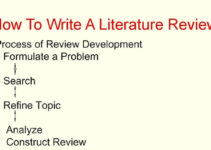Introduction
Today’s market dynamics and socioeconomic environment have complicated supply chain systems. There are many variables and factors impacting businesses and companies, and they’ve to keep in mind all of them while developing the strategy. Today, we’ll discuss what is supply chain strategy; its main components and elements of developing it, and top supply chain strategies.
What is Supply Chain Strategy? Definition
Supply chain strategy is the decision that outlines the long-term potential capacities of the SC functions, and it contributes to the overall strategy of the company through the supply chain resources and adapting to the ongoing changing market requirements. It also outlines what types of sourcing, logistics, and operations they should try in order to win the competition.
In short, supply chain strategy allows the company to transform from a win-lose strategy to a win-win situation; open and worst competition to organized cooperation; various exchange processes to globally optimized exchange processes; controlling stock towards sharing information; internet-based network; and proprietary system to progressive and open system.
According to Michael Porter, supply chain strategy outlines the integration and connection of various functions and operations in the value chain network to meet the requirements of the customers in the marketplace.
Elements of Supply Chain Strategy
Supply chain strategy comprises of four main elements and they’re as follows;
Industry Framework (Marketplace)
Industry framework comprises of economic factors, technological development, customers, and dealing with suppliers that impact the competitive environment in any industry. The industry framework comprises of four main drivers and they impact SC design and they’ve got a close link with each other, and they’re as follows;
I-Demand Variation
Demand profile and demand variation impact the consistency and stability, the workload on the production assets, and further, it would influence the production cost and production efficiency.
II-Market Mediation Costs
Marshal Fisher says that the market mediation costs happen when there’s an imbalance between supply and demand in the market. For instance, the price of the product declines when there’s excess supply, or the company would lose a sale when demand increases supply. The costs occur when there’s a disruption of the balance between product expiration and losing sale, and the company couldn’t predict the demand.
III-Product Lifecycle
The lifecycle of the product is becoming shorter in today’s world due to factors like customer market trends, fashion, and fast change in technology and it impacts the market mediation costs and predicting demand. Resultantly, companies have to renew their product portfolio and product development speedily to meet the market trends.
IV-Cost Relevance
The cost of the asset to the total cost of the company has become significant because the company’s profile has a great link with the asset utilization rate. Companies have to make sure that their profile and the asset utilization rate should have relevance. When the asset utilization rate goes up and down, but unexpectedly the response rate is high, then it means high customer satisfaction level, and low market mediation cost.
Unique Value Proposal
A unique value proposal means that you should have a clear comprehension of the company’s competitive position relevant to the supply chain. Terry Hill and Alex explain it with terms like “order qualifier” and “order winner” in 1995. Order qualifier means meeting the minimum requirements that the customers would consider your product a choice or an option. Order winner means differentiating your product much better than competitors so that the customers would buy your product.
You should study and identify some of the main features of the order winner that the customers value and appreciate, and try to include them in your supply chain to meet the customer requirements.
Managerial Focus
Managerial focus plays a significant role in developing coherence between the unique value proposal of the business and the supply chain execution. Businesses and companies usually fall under this category. However, the reason they fail is because of the over-emphasis on the performance indicators without considering the competitive positioning of the company.
This approach motivates companies to use local efficiencies that contradict with value proposal of customers. It doesn’t develop alignment between the business strategy and the supply chain.
Internal Processes
Internal processes offer orientation that makes sure the integration of various activities of the supply chain that fall under the areas of delivery, make and source. The element of internal processes comprises of many factors, and out of them, the important is the location of the decoupling point and the asset utilization. However, the process of decoupling in the value chain is when you add unique features and traits to the product to target a specific segment of the customer market. Asset utilization and decoupling points are interdependent on each other.
Top Supply Chain Strategies
Some of the top supply chain strategies are as follows;
Demand-Driven Planning
As the word implies that the company develops SCM planning and strategy based on the real-time demand insight from the market. It employs various technological tools like IoT and AI to assist the SCM team so that it would take the right steps in order to meet the expected demand.
Investment in technology may seem like a lot of costs today, but it would bring a lot of benefits in the future. For instance, iCloud service is the latest growing field, many businesses and companies are using the service of cloud. Cloud services have improved the performance of companies and saved the cost 20% to 30%.
Adaptive Supply Chain
Businesses and companies nowadays are aligning their productions with the production processes in order to make the operations speedy and flexible. The integrated solution is out of the reach of many businesses and companies. In fact, many businesses are still struggling with it.
The problem is the integration of a great volume of analytical data with planning and execution in real-time. Cloud service platforms are addressing this issue and bringing efficient planning and execution of inventory management, manufacturing, and procurement.
Optimized Product Design & Management
Smartphone companies are working on optimization and innovation in technology in order to develop and launch a new competitive annually. It is only possible when the SCM team and the designing department are on the same page. However, smart procurement and a high collaboration system would allow the product developers to use the right components.
Conclusion: What is Supply Chain Strategy? Elements & Top SC Strategies
After an in-depth study of what is supply chain strategy; its four main elements; and top supply chain strategies; we’ve realized that SC strategy is very important for your business. If you’re developing it for your business, then you should keep in mind its main building components and strategies and develop yours accordingly.

Ahsan Ali Shaw is an accomplished Business Writer, Analyst, and Public Speaker. Other than that, he’s a fun loving person.


